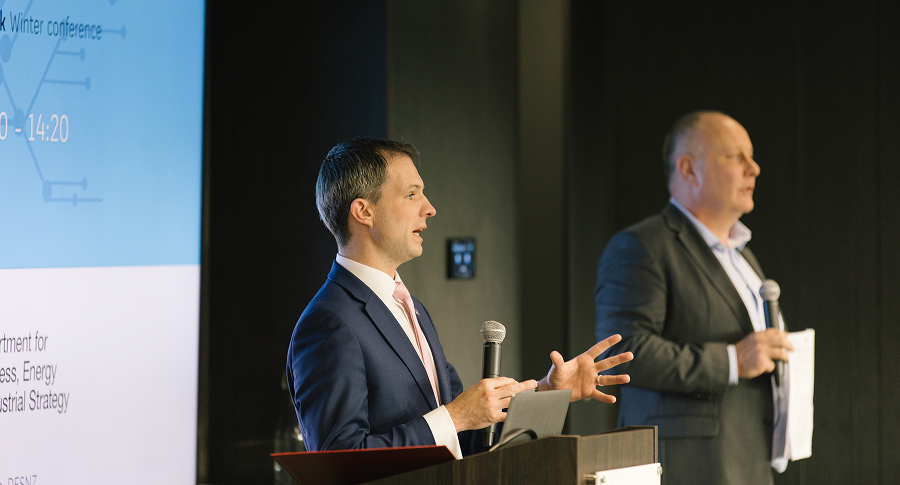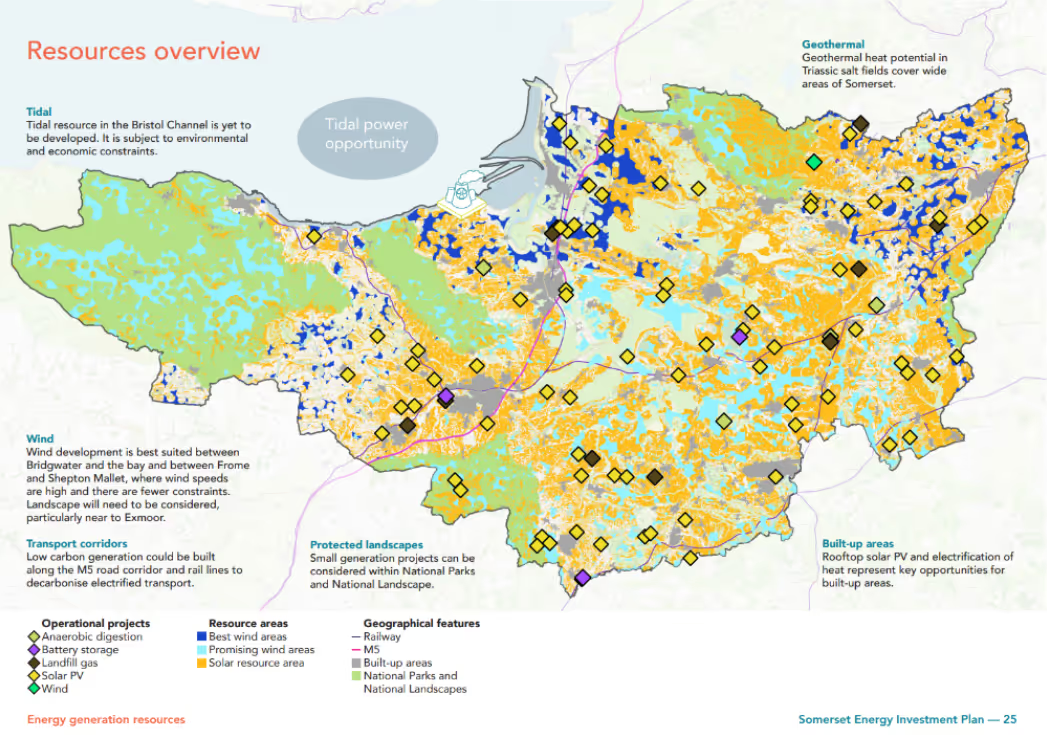Commissioned by Somerset Council, this guide sets out the current evidence on the energy system in Somerset and analyses the local resources to inform a potential Net Zero Pathway for the county.
.jpg)
Commissioned by Somerset Council, this guide sets out the current evidence on the energy system in Somerset and analyses the local resources to inform a potential Net Zero Pathway for the county.

In 2023, Somerset's newly formed unitary authority sought to develop a county-wide energy plan that would forge a roadmap to achieving the objectives of its Climate Emergency Strategy. These are to decarbonise local authority and wider public estates, work towards making Somerset a carbon-neutral county by 2030 and create a county that is prepared for, and resilient to, the impacts of climate change.
The aim was to set out how the council might work with community energy organisations, the private sector and other stakeholders to invest and grow renewable energy in Somerset. This plan sets out the current evidence on the energy system in Somerset and analyses the local resources to inform a potential Net Zero Pathway for Somerset. This pathway has been used, alongside stakeholder engagement, to identify opportunities for investment in Somerset, their potential economic and local benefits, potential policy development for Somerset Council and options for delivering action.
Read the report here.

36%
reduction in emissions since 2005
2/3
of homes and non-domestic buildings need retrofitting
29%
of annual electricity demand is generated from local renewable sources
However, when the council learned it would be facing budgetary cuts, we had to respond and reshape our key recommendations in a way that was mindful of resource constraints that placed the council in the role of key facilitator, rather than lead investor. So, how can a council that’s strapped for cash still come forward as a leader in the local net zero energy transition? One thing is certain – strategic partnerships, strong local planning and priming the market will be the key levers to unlocking some of the most exciting opportunities.
Our recommendations were organised under six key themes:
Each of these contains opportunities around priming the market, local planning and strategic partnerships. Our hope is for this report to be a guidebook and first port of call for the council to refer to when planning the net zero transition. To ensure it doesn’t sit unopened on the shelf, we set up an internal steering group and task and finish group to engage, obtain buy-in and test solutions to garner support for the project as a whole. Each theme was carefully considered using criteria such as: Will it provide a significant opportunity to deliver net zero? Does it present immediate opportunities for Somerset in terms of investment or jobs?
The new Local Plan could include robust planning policy to support the development of high-quality large-scale solar, wind and energy storage projects that maximise local benefits, subject to other considerations such as social, environmental and economic factors.
In fact, the policy impact of implementing some of our recommendations into the new Local Plan is so large that it spans across several of our key recommendations. We recommend that the Local Plan should:
The council should lead a skills transfer programme, in partnership with educational institutions, that uses facilities and workforces brought into Somerset by projects such as Hinkley and the gigafactory.
In terms of most job creation, there were some clear winners from the analysis. Installation of rooftop solar and retrofit jobs had the highest potential for creating the most FTE job years. These could be key sectors to target for skills transfer programmes, particularly for workers previously at Hinkley C. Regen has engaged heavily with EDF and Hinkley C stakeholders to highlight this unique opportunity to bridge the skills gap. In addition to this, several stakeholders from across education, skills and manufacturing sectors expressed interest in taking part in such a partnership.
The council should consider how to support the coexistence of renewables and agriculture, reviewing best practice on existing schemes, working with the rural community and developing appropriate local planning policy and guidance.
A key aspect in building these recommendations was external stakeholder engagement. People across many different Somerset-based organisations with a stake in local energy development engaged with us over the course of the project either via webinars, interviews or email. This forms the backbone of future partnerships between the council and local industry, and our hope is that discussions raised, begun or continued during this engagement process will continue well after project completion.
An ongoing project between the council and UK100 will lean on the findings of this report to help the council find funding and support opportunities that this piece of work has identified.
Sign up to receive our monthly newsletter containing industry insights, our latest research and upcoming events.